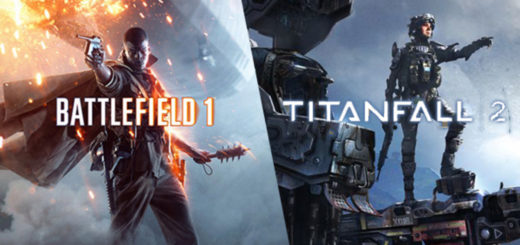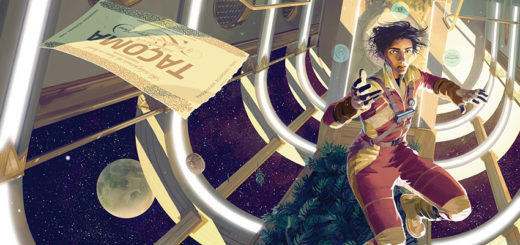PINSTRIPE Review
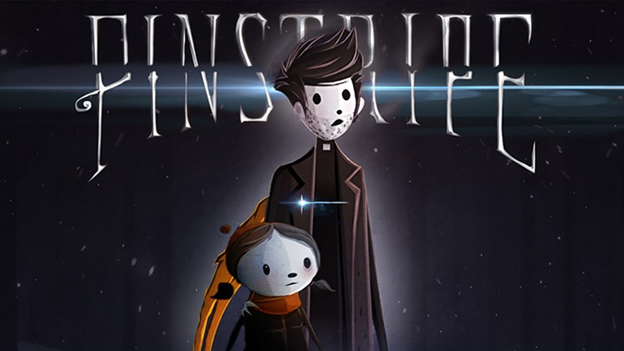
Anyone who grew up on the internet in the mid-2000s is probably familiar with Newgrounds.com, a website perhaps best described as the DeviantArt of Flash. Many, many prominent content creators got their start on NewGrounds and went on to develop careers because of it (as long as you consider YouTube a career path). One of these creators is Thomas Brush, a freelance artist and game designer who published his first two flash games, SKINNY and COMA, on the site. For PINSTRIPE, Brush wanted to prove that he could make a game on his own without any help, and as a result, the game is largely a solo effort on his part. It’s difficult to tell whether PINSTRIPE is successful because of, or in spite of, Brush’s background and development process, because while the game is fun to play and more fun to look at, it suffers from some notable flaws that can leave players going ” . . . egh . . .”
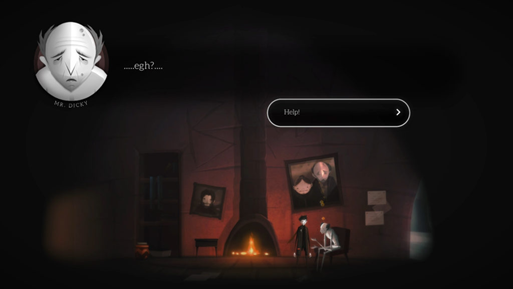
Yeah, like that
PINSTRIPE is the story of Ted, an ex-parson just trying to get over the death of his wife during a train ride with his daughter. Unfortunately for Ted and his grieving process, he’s beset by a strange man named Mr. Pinstripe, who kidnaps his daughter, Bo, and crashes the train they’re on. Alone in a nightmarish alternate reality, Ted must rescue his daughter and uncover the truth about his mysterious circumstances. This involves a bit of platforming, solving a bunch of puzzles, and collecting clues to shed further light on these aforementioned mysterious circumstances.
Ted is pretty satisfying to control; his jumping physics are agreeable, moving him around is easy despite his only speed being a gangly sprint, and firing projectiles is pretty straightforward. This makes for some good platforming experiences that coincide with some fairly challenging puzzles. You won’t have to deal with any WITNESS-level hair-pulling, and those that are used to that level of difficulty might even call PINSTRIPE’s puzzles trite, but they’re perfect for those just looking to experience the game’s story.
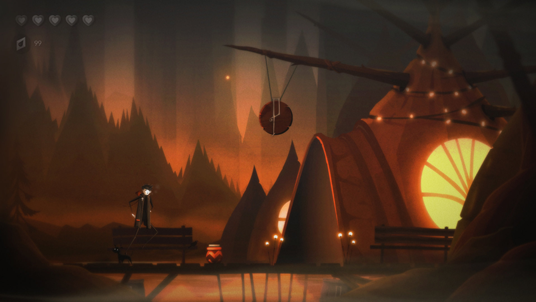
Or, more importantly, its use of yurts
There are plenty of odes to Tim Burton within PINSTRIPE, primarily in the form of the gaunt and lanky cast of characters (you’ll notice that everyone’s faces kind of resemble skulls). The game’s art style teeters on the edge of German Expressionism, especially in the backgrounds and with buildings, but never veers directly into it. PINSTRIPE has its own distinct style, and it’s just haunting and eerie enough to make players want to find out more about this world that Ted has been thrust into. The game is set in the English countryside in 1922, and the aesthetics of the era, combined with the generally ookie atmosphere, gives everything a bizarre sense of alienation similar to the first BIOSHOCK. As far as alternate nightmare worlds go, PINSTRIPE’s is delightfully off-putting.
As mentioned before, PINSTRIPE is largely a solo effort by Thomas Brush. And, as it turns out, this is a remarkable accomplishment given the circumstances. However, so many things detract from the game’s overall quality that it ends up with a very amateur sheen. The voicework, for starters; Ted is your standard silent protagonist with lines chosen by the player, but everyone else in the game is voiced, and it seems like Brush is not only unfamiliar with voice directing, but lets the possibility of having famous voices in the game overtake his commitment to the game’s tone. The player very quickly goes from “Oh, cool, Ross O’Donovan is in this” to “Jesus Christ, PewDiePie is in this too?” Nothing kills a sense of eerie atmosphere like having most of the Game Grumps (Danny Avidan and Kevin Abernathy both voice characters, along with Ross) and even JackSepticEye hamming it up in your creepy puzzle game.
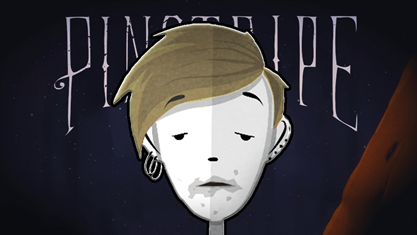
This must be Hell
There’s also the game’s good and evil mechanic, which essentially boils down to “characters say things and oftentimes you have the option to reply kindly or like an asshole.” There are also objects on the ground that the player can pick up to improve either score, an oddly out-of-place system that makes the dynamic feel even more irrelevant. Many of the ruder dialogue choices seem unwarranted, and the entire narrative system doesn’t have much of an effect on the outcome of the game, which is also ultimately disappointing. Ted is running around in his own personal Hell, a world born from the worst mistakes he made during the course of his life. Everything sort of represents something from his life, including his need to defeat Mr. Pinstripe and rescue Bo. It’s a tried-and-true narrative and thematic concept, but this isn’t exactly SILENT HILL. It inspires more questions than it asks, and as a result, undermines the very themes it uses.
None of this is to say that PINSTRIPE is a particularly “bad” game. As mentioned before, the platforming is enjoyable and blends with the puzzle elements in order to create a more dynamic sense of accomplishment. Even the shooting mechanics satisfy and factor into more scenarios than simply killing bad guys, so there’s no doubt that Brush has a handle on basic game design. I ended up playing the game twice, as it offers a “New Game +” where the player can collect more in-game currency to purchase different outfits and items for the game. This was also made more appealing because of the game’s brevity, clocking in at around three hours. I enjoyed the look of the world, I enjoyed the solemn soundtrack, and I always enjoy a good interpretation of Hell.
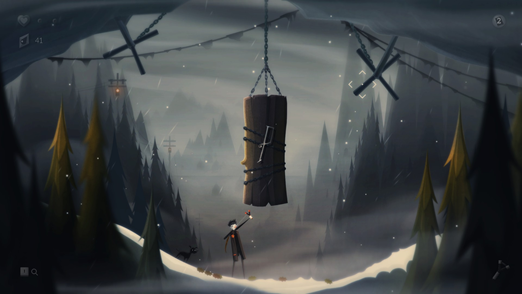
Dante specifically mentions the circle where the damned are forced to shoot wheels with slingshots to raise logs for eternity, as punishment for, uhm, something
Several of PINSTRIPE’s features lack polish, while others seem tacked on for no other reason than Brush liked how other games used them. These are certainly annoyances, but none of them are damning faults. For anyone familiar with the Flash games that populate Newgrounds, PINSTRIPE will definitely offer a little walk down memory lane. Anyone who still enjoys playing these Flash games may find that Xpadder for Windows – which allows you to play them with your gamepad – will transform the way that you play and greatly improve upon the experience. These games are usually designed to be short and somewhat simple, and, well, PINSTRIPE offers an achievement for those that can beat the game in under an hour, so you do the math. PINSTRIPE is an amazing, well-produced, Flash game, as well as a testament to the gumption of one person working on their own and long enough to merit a couple playthroughs in your browser, but paying $15 for it on PSN is not such an obvious sell. That being said, as long as you know what you’re getting into and temper your expectations, PINSTRIPE is worth the asking price.
Verdict: Recommend
Reviewed on PlayStation 4, also available on Xbox One, Mobile, and PC

